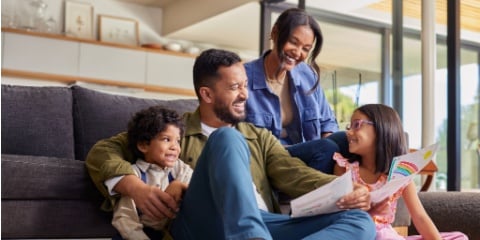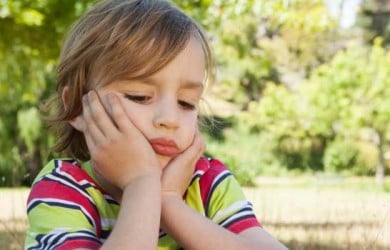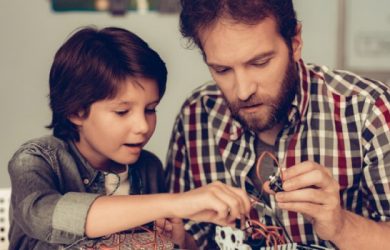Separation Anxiety in Children: 10 Useful Tips to Cope

Unlock Daily 30-Sec Tips for a Happier Relationship
👉 Subscribe FREEKey Takeaways
Marriage.com AI Quick Summary
The mother of 9-month-old Elizabeth is concerned—she used to be able to leave baby Elizabeth with the babysitter no problem, but lately, when she hands Elizabeth over, the baby just cries and cries.
At home, things seem a little odd as well.
Lately, when she puts Elizabeth in her high chair and gives her snacks, and then leaves the room to get something, Elizabeth cries and cries until she comes back.
What Elizabeth is experiencing is classic separation anxiety that happens often in toddlerhood.
Classic separation anxiety in babies is when a baby or child cries or has a tantrum when their parent leaves their sight.
This is to attempt to get the parent back into their presence again. Sometimes children even have anxiety at the mere thought of leaving their parents and may cry for a while after they are gone.
While this is totally normal, and children usually outgrow it, sometimes they don’t and the feelings intensify.
Let’s read more about separation anxiety in children.
What is separation anxiety disorder in children?
According to WebMD, Separation anxiety disorder (SAD) is a condition in which a child becomes fearful and nervous when away from home or separated from a loved one — usually a parent or other caregiver — to whom the child is attached.
It also mentions that it is very typical for babies 8-14 months old to have some level of separation anxiety or clinginess, and other sources say that for small children 18 months to nearly 3 years old, separation anxiety is quite typical as well.
Sometimes, even older children experience some form of separation anxiety for a time, though it’s less typical than with babies. Less common still are children who have crossed from separation anxiety into a disorder.
It is discovered that around 4%-5% of children between the ages of 7 and 11 in the United States experience separation anxiety. This condition is less prevalent among teenagers, with approximately 1.3% of American teens being affected. Both boys and girls are equally susceptible to its effects.
What causes children to develop separation anxiety?
What causes separation anxiety in children?
While it makes sense that babies have separation due to brain development, what about children? How common is separation anxiety in children?
Some older children who have childhood separation anxiety seem to always have had some degree of separation anxiety, and some go for a period without issues but then develop it again, usually around age 7 or so. Why is that?
Typically this happens because of a new situation.
It could be due to starting school, or it could be because they have recently moved and worry that they will get left behind somewhere. There could be other sources of worry, such as a new daycare provider, or even a new sibling in the house.
All the newness shakes up the child’s whole world, making them cling to what helps give them the most comfort.
Children thrive on predictability, and when that predictability is threatened, they react by doing what makes them feel most safe.
Still, there could be another reason and the older child is more clingy lately. Separation anxiety in older children comes with its own unique challenges.
If there is a large degree of family stress or a traumatic event that has caused the child to question their safety, that could cause the child to seek the safety of being with a parent as much as possible.
Perhaps they have had a recent hospital stay, gotten lost at the mall, or experienced a death in the family. Children may react by displaying symptoms of separation anxiety.
5 symptoms of separation anxiety in children
Separation anxiety in children can manifest through various symptoms that reflect their distress and discomfort when separated from their primary caregivers or familiar environments.
Here are 5 common separation anxiety symptoms:
Excessive distress
Children who face anxiety due to separation may exhibit excessive distress when faced with such situations. They may become inconsolable, cry uncontrollably, or display intense physical reactions such as trembling or sweating. These reactions often occur in anticipation of separation or during the actual separation.
Clinging behavior
This is often seen as part of toddler separation anxiety.
Children experiencing separation anxiety tend to exhibit clinginess toward their caregivers. They may constantly seek physical proximity, refusing to be left alone. They may become excessively attached to a specific person and become reluctant to participate in activities that involve separation.
Fear of harm
Children with separation anxiety often have an intense fear that something bad will happen to their loved ones or themselves during separation. They may worry about accidents, illnesses, or other negative events and express a strong desire to remain constantly connected to their caregivers for safety and reassurance.
Reluctance to attend school or social events
Separation anxiety in children can lead to an aversion to attending school, daycare, or social events where separation from caregivers is required. Children may express resistance, complain of physical discomfort, or display avoidance behaviors to escape the separation situation.
Physical symptoms
Separation anxiety can also manifest in physical symptoms such as headaches, stomachaches, nausea, or even vomiting. These symptoms may be stress-induced and tend to alleviate or disappear when the child is reunited with their caregiver.
How to cope with separation anxiety in children: 10 useful tips
Or how to deal with separation anxiety in children
Little Ben has had a big year. He’s switched to a toddler bed and has even begun potty training.
Many times at night, Ben cries and jumps out of bed, and runs to his parents’ room, wanting to get into bed with them.
The American Academy of Pediatrics said while parents may view this behavior as simply being disobedient, in fact, it’s a normal stay of development in the child.
So, how can you deal with separation anxiety?
On the subject of dealing with separation anxiety, the organization advises parents to keep being firm, but loving.
A definite answer to the question, “How to deal with separation anxiety in toddlers or children of any age” is -reassurance is key.
Your child needs to know that you aren’t going anywhere.
If you are going to be gone for some reason, explain that to your child, and reassure them that you will return.
Here are 11 strategies to help ease separation anxiety in children:
- UNICEF advises addressing the fear of not seeing you again by discussing plans for your return with your child. This can help alleviate their anxiety about separation.
- Gradually introduce separations by leaving your child with a trusted friend or relative for short periods. This allows them to become accustomed to being apart from you.
- Provide a comforting item such as a soft toy or blanket that your child can hold onto during separations. If they don’t have a favorite comfort object, introducing one may be beneficial.
- Offer comfort and support when your child is afraid. Take the time to listen to their concerns and respond with understanding and compassion.
- Introduce new caregivers gradually by arranging short get-togethers involving all parties before leaving your child alone with them.
- Make goodbyes quick and positive, remaining calm and optimistic. Although goodbyes can be difficult, maintaining a positive attitude can help reassure your child.
- Strive for consistency in your daily separation routine, using the same drop-off ritual at the same time each day whenever possible. This predictability helps minimize unexpected factors.
- Honor your commitment to return as promised. By keeping your word, you build trust and foster your child’s confidence in their ability to be without you.
- Provide specific details about your return that your child can understand. If you know you’ll be back by 3:00 pm, communicate this information in a way that resonates with them.
- Avoid giving in to excessive reassurance-seeking behaviors. Instead, reassure your child that they will be fine, and establish consistent boundaries to support their adjustment to separation.
- Whenever feasible, maintain familiar surroundings or make new environments familiar by encouraging your child to bring a familiar object from home when they are away.
Advanced and medically practiced ways to treat separation anxiety in children include therapy.
The most common form of therapy used to treat separation anxiety disorder is called cognitive behavioral therapy (CBT). CBT involves helping children and parents to learn ways to change unhelpful thoughts and behaviors.
It is also encouraged for parents to consider couples therapy for themselves in order to develop effective coping ways both as parents and partners.
Additional questions to consider
Separation anxiety is a sensitive issue to deal with in children. To help parents navigate this challenge, we have compiled some more relevant questions along with their answers. Read on.
-
How does the pediatrician diagnose separation anxiety disorder in children?
Pediatricians diagnose separation anxiety disorder in children by conducting thorough assessments, including interviews with the child and caregivers, observing behavior, and considering the duration and impact of symptoms on daily functioning.
-
Which children are at risk for separation anxiety disorder?
Children who have experienced significant life changes, trauma, disruptions in attachment, have an anxious temperament or have a family history of anxiety disorders are at higher risk for developing separation anxiety disorder.
-
When does separation anxiety in children become a disorder?
Separation anxiety in children becomes a disorder when the symptoms are excessive, persistent, and significantly interfere with the child’s daily functioning, causing distress and impairing their ability to engage in normal activities.
A practicing nurse Sarah talks about three possible stages of separation anxiety in children. Watch here:
Preparing your children for a more secure future
Separation anxiety is not uncommon in children and it’s important to know what it means so you can better recognize the glaring symptoms in your child and react accordingly well within time.
Offering reassurance, and practice of small periods of separation, are good ways to help your child become more comfortable with leaving your side.
When your child doesn’t outgrow their anxieties and especially when the anxieties intensify, it’s a good idea to take your child to their pediatrician and a psychologist for evaluation.
If they are diagnosed with separation anxiety disorder, there are many treatment options that are effective. Overall, your aim should be to make your child learn how to best cope with their fears and develop a more healthy reaction to anything that drags them out of their comfort zone.
 Tips
Tips
Write your tip or submit a video tip
All tips are reviewed before the publishing.
Share this article on
Want to have a happier, healthier marriage?
If you feel disconnected or frustrated about the state of your marriage but want to avoid separation and/or divorce, the marriage.com course meant for married couples is an excellent resource to help you overcome the most challenging aspects of being married.
Recent Articles
Related Quizzes
Unlock Daily 30-Sec Tips for a Happier, Healthier Relationship
👉 Subscribe FREE on YouTube We'd love your feedback!
We'd love your feedback!
 Expert Q&A
Expert Q&A
Ask your question related to this topic & get the support you deserve from experts.

 Reviewed By
Reviewed By


















 Thanks for your feedback!
Thanks for your feedback!